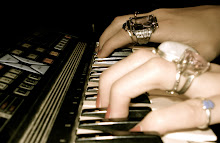The general area where I recorded my sounds was NDG. My first sound walk was on a cold, calm day in a nearby park, in hopes of recording simple, natural, ambient and isolated sounds. Although I was able to record cars whizzing by and snow crunching under my feet, I realized that in the winter everything is very dead. Thus, I decided that a lot of the sounds on this walk needed to be provoked by me. Throughout this walk, I rustled garbage bags, tapped on fences, and kicked empty cups. I noticed a trash-theme throughout my sounds, perhaps because trash is partial to the area. After all, the park is located near a school full of children, a playground full of families, and possibly homeless people at night.
Although I was able to capture many noises, I struggled with understanding if these noises were isolated or ambient. Many noises that I intended to be isolated had other faint background noises that made them possibly ambient, and the ones intended to be ambient, I wondered if there mixture of sounds were enough to make them ambient. In Stanley Alten’s “Part One: Principles” article, he mentions that, “Sound is omnidirectional; it is everywhere.” This idea backs up the fact that pure, isolated, outdoor sounds are difficult to attain.
Since I still had questions and doubts about my sounds, I set out on another sound walk along the busy, main street of Sherbrooke Ouest. The wide variety of unique sounds drew me to this location. The main sounds I captured on this street were the obvious ticking crosswalks and driving, honking cars and buses. I was also able to capture unexpected noises such as telephone booth sounds, shopping carts, water trickling into a sewage system, glass bottles, etc.
In both locations a lot of talking and ambient voices could be heard, which was a hard obstacle to work around. A sound that I would have liked to capture but did not was wind because I found this one to be a challenge. My recordings of it always sounded like a mistake as if I was trying to record another noise that just wasn’t there. Even after my second sound walk, I did not feel confident in my library of sounds. I felt that they were too typical. I wanted rare noises that are not always heard every time you step outside. I started thinking through the perspective of a homeless person because they would be very familiar with constant, outdoor sounds of the city. I brainstormed a list of sounds that I believed a homeless person might notice daily but we forget about such as, dropping coins, the click of a lighter, rustling newspapers, clinking metal, etc. After getting all of my sounds from the park, the street, and the perspective of a homeless person, I felt that my NDG sound collection was complete!
I was always cautious of the microphone placement when recording, since these outdoor sounds were already sensitive to other noises. I wanted to avoid microphone handling as much as possible and therefore found that using the grey clip on device to hold it by was helpful in terms of keeping the microphone stable. I also found that getting isolated sounds outside was difficult. At times I was tempted to take portable sounds that could be heard outside and record them inside so they could be heard best, however I thought the ones recorded inside would be distinctly different and ruin the flow. They would be missing faint components such as background wind that provides an outdoor feeling.
All of my sounds’ timing is based on the middle of the day. If recorded at night instead of day, the busy street life and human-provoked sounds would not be as frequent. Some sounds, such as a glass bottle being kicked, would have a different feel because of the change in other factors surrounding it. For example, the dead sound of the night would most likely make the sound more creepy or suspenseful.
The weather also impacts the results of my sounds. Since none of these locations are sheltered, a very high wind would majorly affect these sounds. Luckily, my sound walk days had very calm winds. Also, since many of these sounds were human-provoked they could not always be guaranteed to be present if someone else were to take the same sound walk route. For future recordings, the time of day, weather, and what objects one might come across on the walk are major factors for future recordings.
Though my narrative was initially intended to be the day in the life of a homeless person, as I used this perspective when I gathered some of my noises, the narrative ended up sounding like an average person getting off of a bus, coming across an empty bottle, throwing it out, and then attempting to make a phone booth call. Though simple, I think it depicts a day in the life of a good person!
